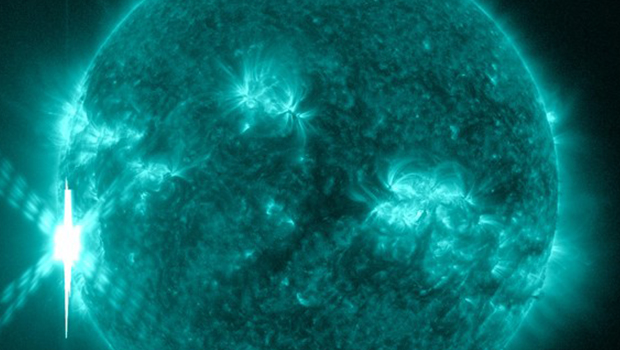Sun unleashes monster solar flare, biggest of 2014
The sun fired off a major solar flare late Feb. 24, making it the most powerful sun eruption of the year so far and one of the strongest in recent years.
The massive X4.9-class solar flare erupted from an active sunspot, called AR1990, at 7:49 p.m. EST. NASA's Solar Dynamics Observatory captured high-definition video of the monster solar flare. The spacecraft recorded amazing views the solar flare erupting with a giant burst of plasma, called a coronal mass ejection, or CME.
"Long-lived sunspot AR1967 returned to the Earthside of the sun on Feb. 25th and promptly erupted, producing an X4.9-class solar flare," astronomer Tony Phillips wrote in a Spaceweather.com alert. "This is the strongest flare of the year so far and one of the strongest of the current solar cycle."
X-class solar flares are the most powerful kinds of solar storms. If directed at Earth, last night's solar flare could have caused a serious geomagnetic storm, created when charged particles slam into the planet's magnetic field. When aimed at Earth, strong solar flares can harm satellites and astronauts in orbit around Earth. A powerful solar flare delayed the launch of a private cargo ship to the International Space Station in January.
The sun is currently in the active phase of its 11-year solar cycle, called Solar Cycle 24. While X-class storms are the most powerful, mid-level flares are named M-class events, which can supercharge Earth's northern lights. Weaker C-class events round out the top three most powerful types of solar storms.
Follow Miriam Kramer @mirikramer and Google+. Follow us @Spacedotcom, Facebook and Google+. Original article on Space.com.
